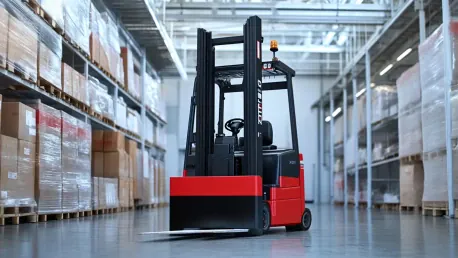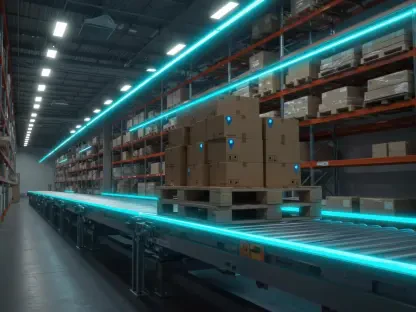In recent years, modern order picker forklifts have undergone several significant advancements to address the evolving demands of warehousing and logistics operations. As consumer demands intensify and the need for swift order fulfillment grows, the technology behind order picker forklifts has adapted to meet these challenges, making them crucial for enhancing productivity, minimizing downtime, and ensuring both operator safety and comfort. These developments aim to increase efficiency by maximizing uptime, reducing operational costs, and facilitating a safer working environment for employees.
Improved Energy Efficiency
One of the primary advancements in modern order picker forklifts is enhanced energy efficiency. Traditional models depended heavily on power sources that required frequent recharging or refueling, leading to increased downtime and efficiency losses. Manufacturers have responded to these challenges by introducing state-of-the-art battery technology and power management systems. Among these, the adoption of lithium-ion battery technology stands out as a key improvement, offering faster charging times, longer lifespans, and higher energy efficiency compared to conventional lead-acid batteries. These benefits significantly reduce the need for frequent battery swaps and help lower maintenance costs associated with traditional power sources.
Moreover, many modern forklifts are equipped with eco-modes that optimize power usage based on workload, extending battery life and reducing overall electricity costs. This allows forklifts to operate more efficiently and sustainably, contributing to lower operational expenses and a smaller carbon footprint. The integration of advanced battery management systems also ensures that batteries are charged and maintained optimally, preventing overcharging and extending the overall lifespan of the equipment. As a result, companies can keep their forklifts running longer between charges, maximizing productivity and minimizing the time spent on recharging tasks.
Telematics Integration
Telematics systems have revolutionized the fleet management of modern order picker forklifts. By utilizing wireless connectivity, sensors, and onboard computers, these systems provide critical real-time data insights that enhance overall performance, safety, and efficiency. Telematics technology tracks essential metrics such as equipment usage, battery status, and maintenance schedules, enabling warehouse managers to make well-informed decisions based on solid data for better resource allocation and minimized downtime. This data-driven approach allows for more effective monitoring and management of fleet operations, ensuring that vehicles are used optimally and serviced when necessary.
In addition to equipment monitoring, telematics also plays a vital role in enhancing operational transparency by recording operator performance and adherence to safety protocols. Managers can analyze movement patterns, acceleration rates, and braking behavior, identifying areas where operators may need additional training or guidance. This not only improves safety but also increases productivity by ensuring that equipment is used correctly and efficiently. The ability to generate comprehensive reports and conduct thorough analyses of forklift operations helps businesses identify trends and implement best practices, ultimately leading to more streamlined and effective warehouse management.
Ergonomic Enhancements
Ergonomic enhancements in modern order picker forklifts focus on improving operator comfort and overall efficiency, addressing the need for longer shifts and more precision. One significant development is the inclusion of adjustable controls, allowing operators to tailor the height, reach, and other settings of the forklifts to their specific ergonomic needs. This customization helps reduce physical strain, leading to less operator fatigue and increased productivity throughout the workday. Comfortable operators are more likely to work effectively and maintain a high level of focus, ultimately contributing to safer and more efficient warehouse operations.
Modern order picker forklifts also feature intuitive dashboards designed to streamline operations by providing clear and easily accessible information. These dashboards display crucial data such as battery levels, operational status, and diagnostics, making it simpler for operators to monitor and manage their equipment. With information readily available at a glance, operators are less likely to make errors, ensuring that tasks are completed accurately and efficiently. The combination of ergonomic and intuitive design elements helps create a more user-friendly experience, allowing operators to perform their duties with greater ease and confidence.
Advanced Safety Technologies
Safety is a paramount concern in the development of modern order picker forklifts, leading to the integration of advanced safety technologies that address both operational hazards and environmental challenges. Auto braking systems are one such innovation, activating automatically when potential obstacles or rapid movements are detected. This feature significantly mitigates the risk of collisions, making the workplace safer for both operators and pedestrians. The ability to halt the forklift instantaneously in response to sudden obstructions provides an added layer of security, ensuring that accidents are minimized even in high-traffic areas of the warehouse.
Speed reduction mechanisms are another crucial safety feature, limiting the forklift’s speed when operating at elevated heights to increase stability and control. By enforcing speed limits, these systems help prevent tip-overs and other accidents that can occur when forklifts are used at unsafe speeds. The combination of auto braking and speed reduction technologies ensures that forklifts operate within safe parameters, giving operators more control and reducing the likelihood of accidents significantly. These advancements contribute to creating a safer working environment, allowing floor staff to navigate and perform their duties with greater peace of mind.
Maintenance and Durability Improvements
To minimize downtime and reduce maintenance costs, modern order picker forklifts incorporate design elements that simplify maintenance processes. Tool-free access panels are one of the standout improvements, providing quick and easy access to critical components such as batteries, motors, and electronics. This allows technicians to perform routine maintenance tasks more efficiently and reduces the likelihood of errors during servicing. The ability to access these components without the need for specialized tools speeds up repair and maintenance processes, ensuring that forklifts remain in optimal working condition with minimal disruption to operations.
Modern order picker forklifts also often come equipped with self-diagnostic systems that continuously monitor the machine’s performance. These systems collect real-time data on key components, such as the motor and battery, alerting operators and maintenance teams to potential issues before they escalate into major problems. By identifying and addressing maintenance needs proactively, businesses can avoid unexpected breakdowns and extend the lifespan of their equipment. This proactive approach to maintenance not only reduces repair costs but also ensures that forklifts are available and operational when needed, maintaining the overall efficiency of warehouse operations.
Meeting Industry Challenges
In the past few years, modern order picker forklifts have experienced several significant advancements to meet the evolving demands of warehousing and logistics. As consumer expectations escalate and the push for rapid order fulfillment intensifies, the technology behind order picker forklifts has adapted to address these challenges. These forklifts have become essential tools for enhancing productivity, minimizing downtime, and ensuring both the safety and comfort of operators. These advancements are geared towards increasing efficiency by maximizing uptime, cutting operational costs, and fostering a safer work environment for employees. Enhanced features like improved battery life, advanced navigation systems, and ergonomic designs are examples of how modern forklifts cater to the fast-paced nature of contemporary warehousing. Additionally, the integration of smart technology and automation has made these machines more intuitive and easier to operate, contributing to a smoother workflow and improved overall performance in the logistics sector.









